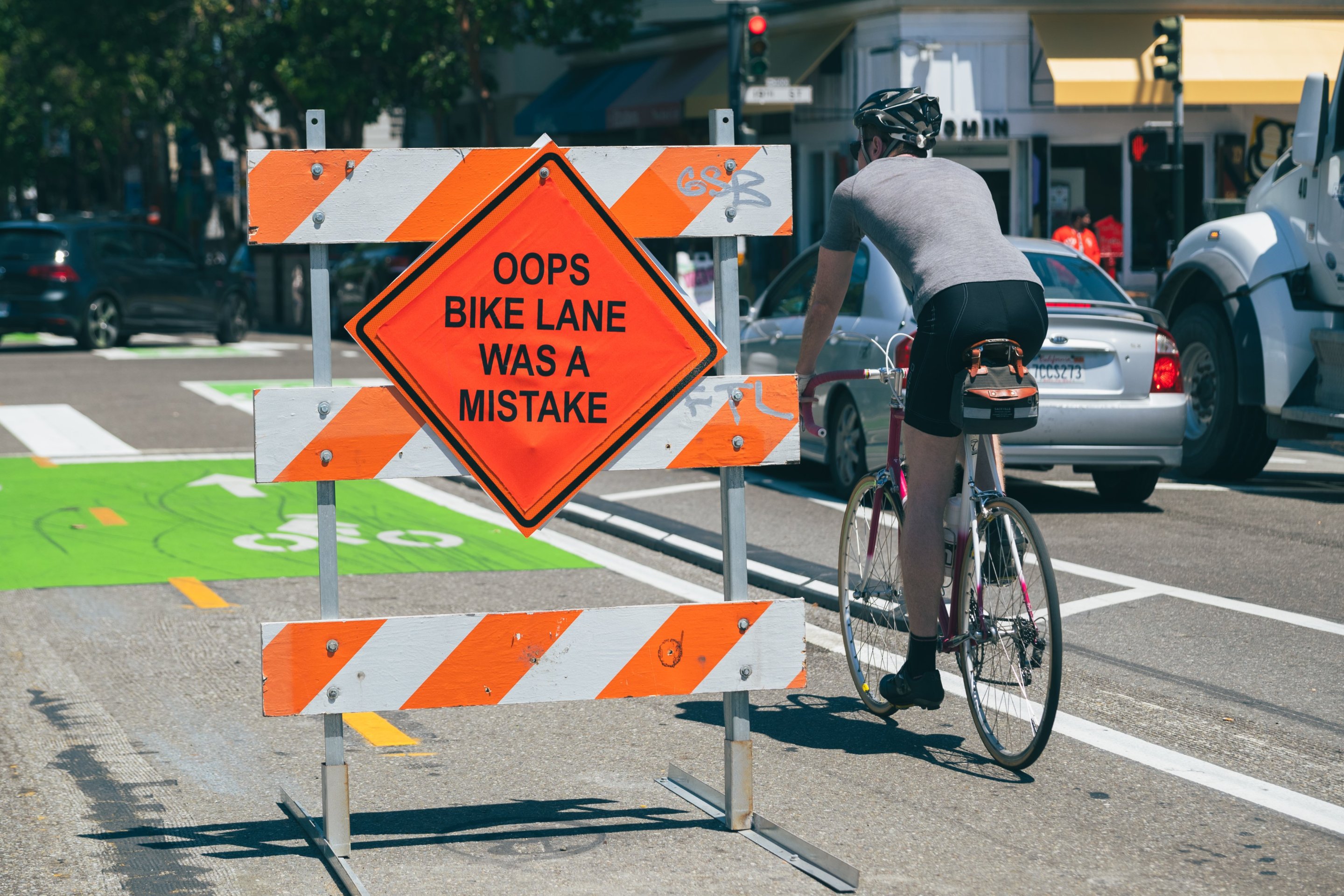SPUR Talk: Running a Big City DOT
4:27 PM PST on November 15, 2017
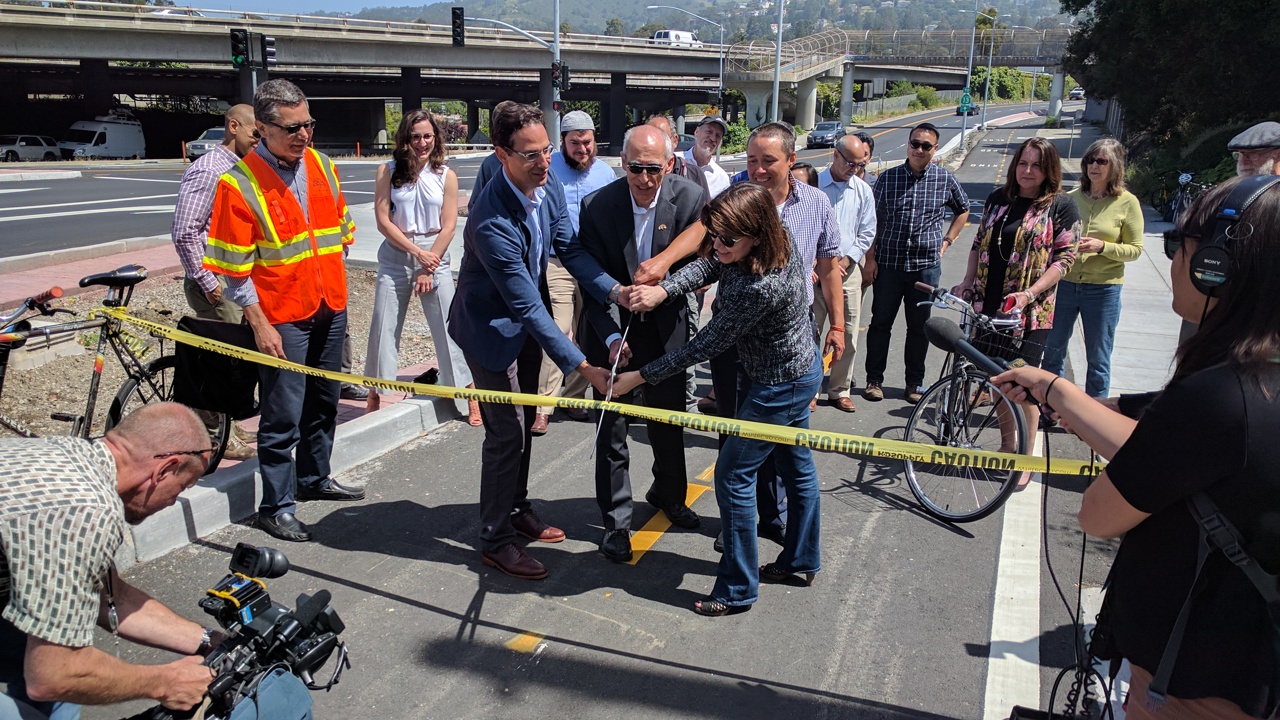
Ryan Russo, Dan Kalb, Renee Rivera and Ann Smulka cut the ribbon on Oakland’s first concrete -protected bike lane. Photo Streetsblog/Rudick
Seleta Reynolds, General Manager of the Los Angeles Department of Transportation, was working at the San Francisco Municipal Transportation Agency's Livable Streets section three years ago, when a friend called and asked if he could put her name in the hat for manager of LADOT.
"I giggled and said I’m not qualified," she recalled at a discussion last night at SPUR's center in downtown Oakland about what it takes to run a big city DOT. "The first thing I did was Google what happened to the previous GM--what came up was a video of 200 employees going to city hall to say they had lost faith in their general manager."
She was referring to the 2013 ouster of then LADOT head Jaime De La Vega. "There had been seven general managers in the previous 11 years at LADOT," she recalled. But transportation legend Janette Sadik-Khan, formerly of New York City's DOT (at that point Sadik-Khan was working as a consultant with Bloomberg Associates, set up by former NYC Mayor Michael Bloomberg), was conducting the interviews for Los Angeles--and that was enough to get Reynolds interested when the call came. "I thought 'when will I ever get a 45 minute one-on-one with Janette Sadik-Khan? I won't be right for this job, but I’ll get on her radar for something else.'"
Evidently, Sadik-Khan and, more importantly, L.A. Mayor Eric Garcetti, didn't agree, and Reynolds got the job.
Ryan Russo, the head of Oakland's new DOT, also has Sadik-Khan, in part, to thank for his position. He worked for her at NYC's DOT. "One of our big jobs was to close Broadway at Times Square and Herald Square and I was tasked with doing all the aspects of that project and delivering it--and we did it," he recalled.
And as Streetsblog readers are most-likely aware, that was also a seminal moment in transportation history--New York City, under Mayor Bloomberg and Sadik-Khan, fundamentally changed the direction of transportation planning in America.
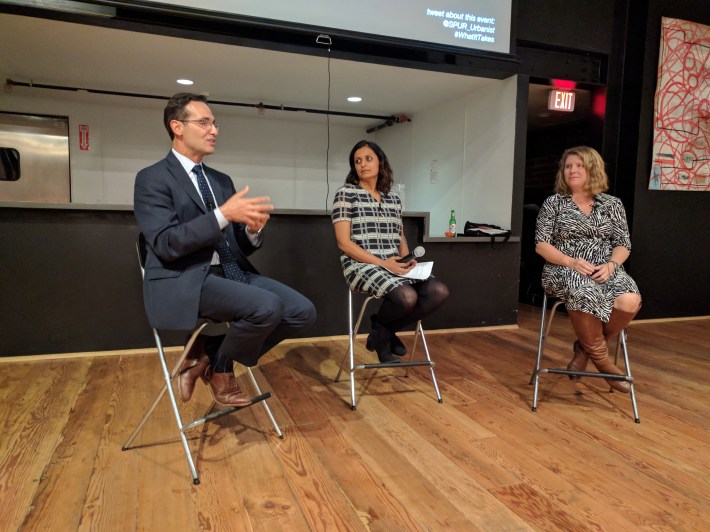
For the first time in the U.S., major thoroughfares were being used for something beyond automobile throughput. And that breakthrough in New York City is what lead Oakland to tap Russo to head up its new DOT. But with both Reynolds and Russo, it meant taking over big city DOTs as talented outsiders. "When I first got there, there was a flyer circulating saying 'Mayor Garcetti’s Great Streets brought to you by NYC and SF--that was a knock on me and Bloomberg," said Reynolds.
Meanwhile, Oakland's approach of making equity the new 'Levels of Service' aligned with Russo's philosophy towards urban planning--that it's about people, not building bike lanes or planting trees or making great streets, per se. And for him, the housing crisis is the biggest problem for the people of Oakland. "We have a national housing crisis in which California is the capital, and the Bay Area is the region's capital of that crisis, and Oakland is the capital of that crisis within that region," he said. "It’s on us as professional planners to see what is the context in which you can help. Ultimately, this is about service, it’s not about 'I put in a bike lane and now I can bike home on it.'"
Reynolds's first challenge was getting familiar with L.A.'s immense geography. She started by getting on every tour and taking meetings in every district she could. She found that the geography isn't the only thing that's over-sized in L.A. "I remain fascinated by the political landscape--which is wildly different from anything I’d experienced in San Francisco or Oakland," she said. "The L.A. City Council has 15 Councilmen [and women], they have huge staffs with like 40 people. L.A. is a really big 'small town."
For Russo, coming to Oakland was always about working to undo the social injustices that have scarred the landscape. "NY started something with bike lanes and plazas. That’s exciting; it’s exciting to see other cities pick that up and grab it. But what we realize is there’s more to the work we do than paint, plastic posts, and trees," he said. "Let’s talk about the results to people and specific communities ... we have narratives about how highway buildings cut off West Oakland from downtown, but have we really turned a corner in investment patterns? Oakland finally voted to tax itself, but will we invest equitably?"
He said these tensions have already come up, for example, when it comes to dealing with transit and increasing cross-bay capacity. "The bridge is full, BART is full--so we need to get people on express buses and give them a queue jump on the bridge," said Russo, but, he added, AC Transit wants to use local streets in West Oakland as bus thoroughfares--and he doesn't want to see communities already ripped apart by the freeway building age suffering more of the same. "We come from background that bus lanes are great, but our job is to make sure that what they do to Grand and other streets come with improvements to Oakland."
Russo, who has experience dealing with so-called 'bike lash' in New York City, wanted to hear about Reynolds's recent experiences in West L.A. "260 people died on our city streets last year--it's the number one cause of deaths for kids under 14 in L.A.," said Reynolds. Given that, the LADOT launched a major bike lane and road modification/traffic calming project in Playa Del Rey and on Venice Boulevard. Unfortunately, the traffic delays it caused were seized upon by conservative talk radio and a tremendous backlash ensued--the city had to pull out bike lanes and traffic calming measures in Playa Del Rey.
Reynolds said they made several mistakes, chief among them trying to do too much at once--in retrospect, she said she would have installed a few road-calming measures on one street, rather than several at once. "We implemented all of those things at the same time." She also said LADOT did a poor job of communicating the construction delays, so people could avoid the area when the changes were going in. "The communities that felt the impacts of the construction had time, resources to burn, social capital to burn." She said the bikelash was much worse than what she'd seen in the Bay Area. "That was unlike anything I’ve ever experienced in my 20 years of doing these projects."
Russo said that in New York City, at least in the beginning, they looked for streets where they felt bikelash would be minimal. That way they could get something in the ground and start to collect data and get things working. In New York, that meant putting in the first physically separated bike lane on 9th Avenue--in other words, start with low-hanging fruit. "Then you have success stories. And you tell the story about the data. You end up with people who like it. And people who feel left out and they want it," said Russo. In other words, "you do the low hanging fruit on the tree so the higher fruit comes down to meet you."
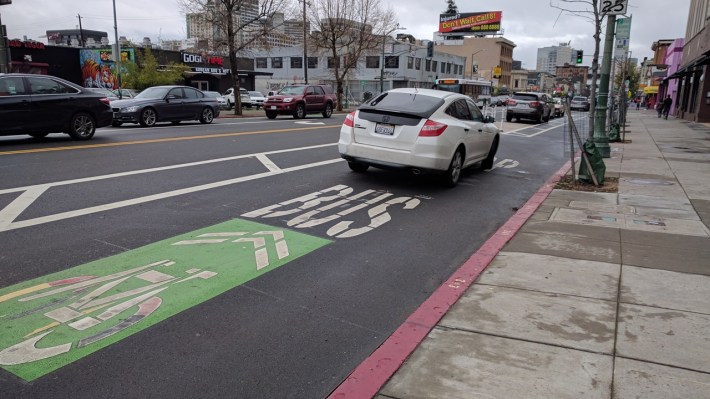
He said that's the hope in Oakland. He said as data comes in on Telegraph, where Oakland got its first protected bike lane, they will use that data to justify building protected bike lanes on other streets. He said if he had come to Oakland sooner, he might have even suggested starting with 'lower hanging fruit,' such as Franklin or Webster. For now, however, he wants to get Telegraph finished (there are bus-boarding islands going in soon) so they have a good example of a redesigned street to point to. "We’re still in the adjustment phase--until people are happy about Telegraph and it’s working, I don’t want to do the next one."
Reynolds agreed that is the best approach. "Play small ball; little wins result in big wins. You can take $100,000 and allow communities to transform their streets for a day, which can lead to big wins and big projects."
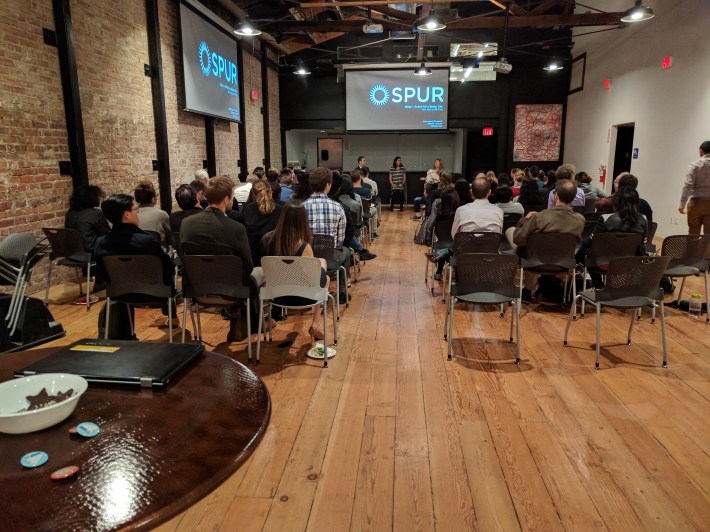
For more events like these, visit SPUR’s events page.
Read More:
Stay in touch
Sign up for our free newsletter
More from Streetsblog San Francisco
Valencia Merchants to SFMTA: We Want Curbside Protected Bike Lanes
Valencia merchants association strengthens support for getting rid of the failed center-running bike lane and replacing it as soon as possible with curbside protected lanes
S.F. Fire Apologies for Tweeting About Imaginary Bike Rule
There is no rule in California that says cyclists have to ride single file
